Teachers spend an average of $500 on their classrooms every year. That’s crazy. And I’m totally one of those people who has done this, but I decided I really needed to cut back where possible so I could budget wisely. Where could I stop spending money?
 One place was rewards. My first year of teaching I gave out team points and the winning team from each homeroom would get a prize. We have two of each grade and are departmentalized, so I had teams in each class. That was easily $10+ a week, about $40 a month, $400 a year.
One place was rewards. My first year of teaching I gave out team points and the winning team from each homeroom would get a prize. We have two of each grade and are departmentalized, so I had teams in each class. That was easily $10+ a week, about $40 a month, $400 a year.
Year 2, I started with monthly prizes but some of my prizes got an upgrade since they were once a month. Which meant $15ish a month, which was still $150 a year.
I also tried giving out tickets one year, and pulling names for prizes, but that seemed silly still. $1 prizes were harder to find and even I thought some of them weren’t worth it. Yes, I know kids don’t mind little things (and let’s face it, some of those things are junk), but I needed them to know that I truly appreciated their good deeds and that their behavior was something they should model ALL the time, not just when I dangled a carrot in front of their nose.
This year, I decided my students were going to behave because,well, I wanted them to. Weird, huh? They needed to learn how to internalize their rewards and take responsibility for their behavior.
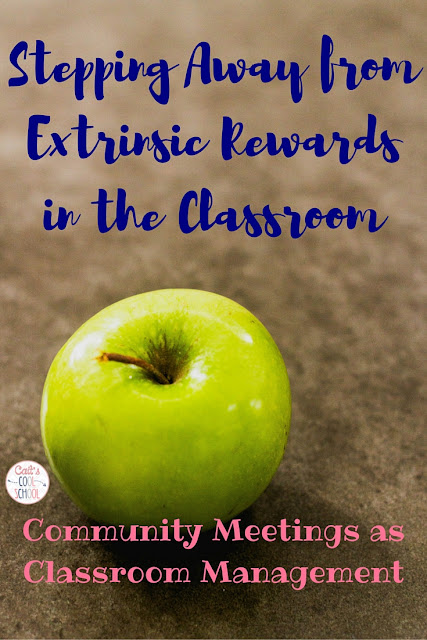 |
| This post may contain some affiliate links, which means if you click on one of the links and make a purchase, I’ll receive a small commission. You will never incur a fee or charge for this. |
After some aggressive Pinterest research, I noticed a lot of people posting about morning meetings. With my current schedule at school, I would be unable to have daily meetings, so I developed the idea of weekly community meetings.
WHAT IS A COMMUNITY MEETING?
Each Monday (or Tuesday if we’re off), my homeroom has a 20 minute meeting where we talk about what happened over the week, what our week looks like in school (any special events coming up either in the classroom or school-wide), our goals for the week, and bucket fillers we’ve seen over the past week. (The short description of a “bucket filler” is someone who show kindness to others.)
Community meetings could also have been held at other times during the week as needed. One time, because of issues on the playground, we had an “emergency” community meeting on a Wednesday with the whole fourth grade to discuss what had been happening and how we could fix it.
WHY DOES THIS WORK?
As a class, we celebrate each other’s successes. This open forum is a place that my students talked about what went well for them and what we needed to work on as a class. For example, there was a period of time when exclusion was a problem in group work and at recess. When one student brought it up, we problem-solved right then. What could we do to make this better? How can we fix it? Is it okay if you don’t want to be friends with everyone? (Um, yes, it most certainly is. But you still must be kind!)
By the next meeting, we would rate ourselves and see if there was an overall change. Just by having students monitor their own behavior, they were problem-solving and learning life skills. Because, let’s be honest, no one gives me (or you!) an award for following the rules every day.
HOW DO I GET STARTED?
We had our first community meeting on the first day of school. First, we talked about what a community is, and how we were like a community. Then I read them the awesome book Do Unto Otters: A Book About Manners and we talked about how to model our community on that philosophy. We establish a mission statement- I used this one from Kelly of An Apple for the Teacher and it worked very well. We discussed each part and determined that our mission statement reflected our goals for the year. The mission statement was something I hung up and we could refer to throughout the year.
WAIT, DOES THIS MEAN YOU NEVER GIVE OUT REWARDS?
No, of course not! It just means every little thing doesn’t get rewarded. When they’ve had an awesome day, or an awesome week, or another teacher tells me how great they’re being, I love to give them rewards. By making those rewards rare and unexpected, they were appreciated so much more. Plus, I didn’t mind splurging on ice cream sandwiches once in awhile when I didn’t need to buy so many other rewards regularly.
ANYTHING ELSE I NEED TO KNOW?
Keep the idea of a community flowing all week long in everything you do. Remind students to help out their community- by being a good partner, by cleaning up after themselves, by helping out a classmate or a teacher that needs something extra done. I like to use to keep us learning about each other and constantly motivating each other.
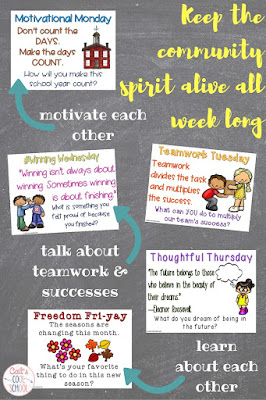 |
| Find these in my store: |
Make the community meeting work for you! Some teachers like daily morning meetings; I prefer the weekly meetings. Need more ideas? Check out my Pinterest board for community meetings– I’m constantly gathering new ideas! Work the idea of a community into your classroom this year and by the end, you will feel like a family- at least that’s how it felt to me 🙂
How have you used rewards in the past? What systems work for you? Think you can try the community meetings?

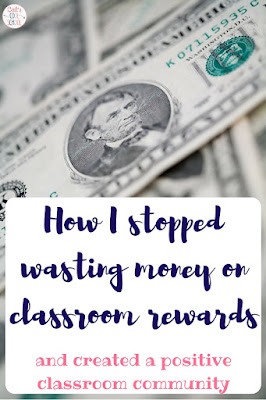


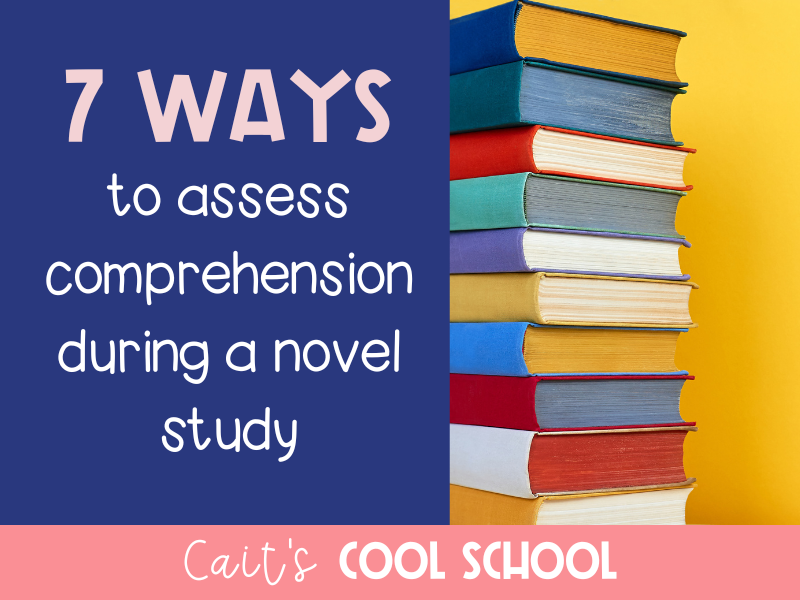


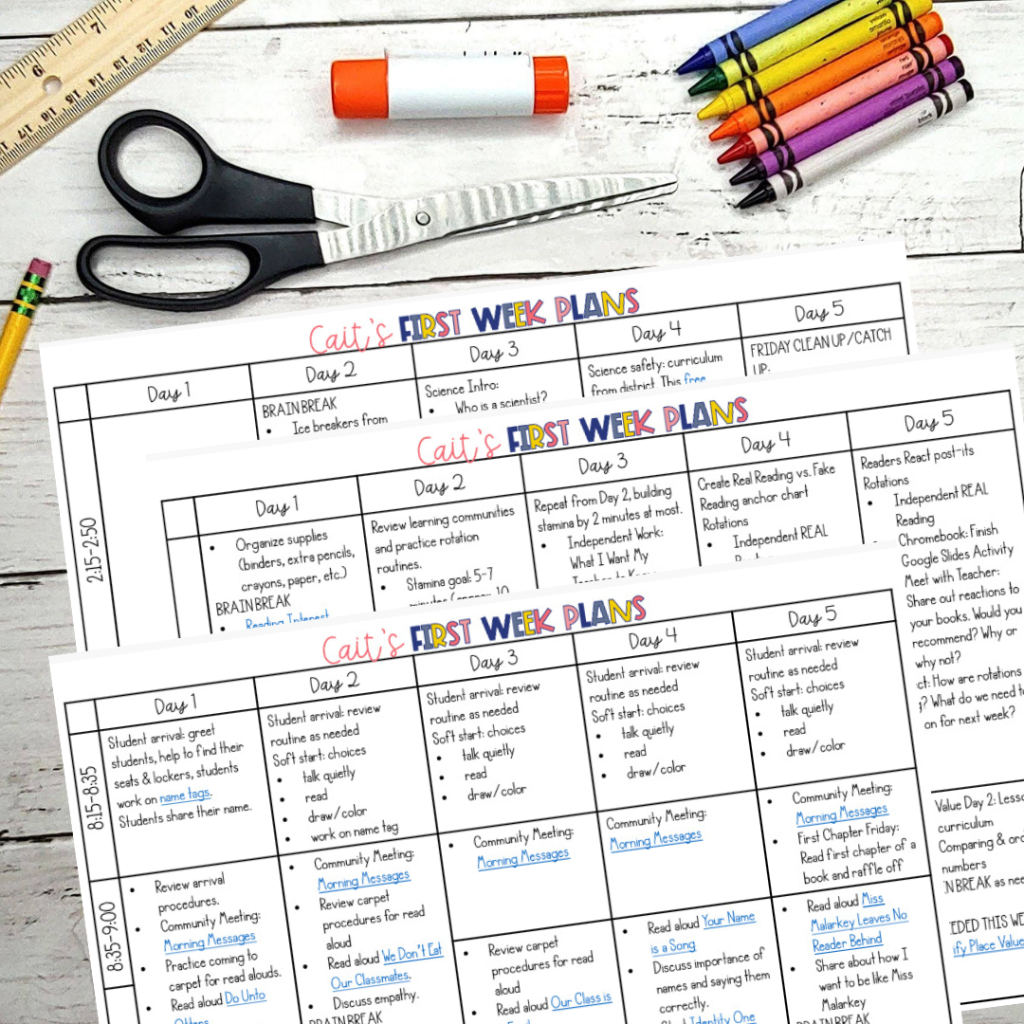
 The first FIVE days of lesson plans for the beginning of the year.
The first FIVE days of lesson plans for the beginning of the year.